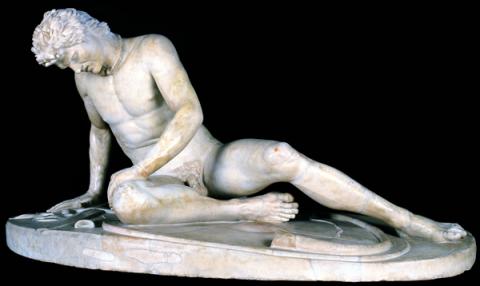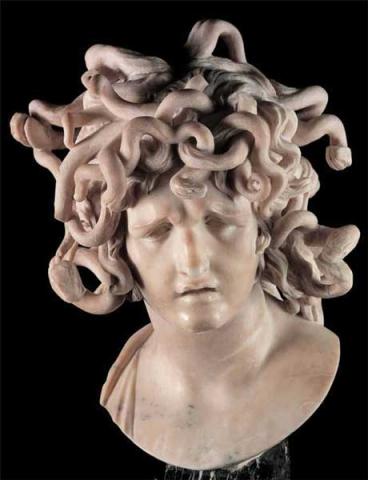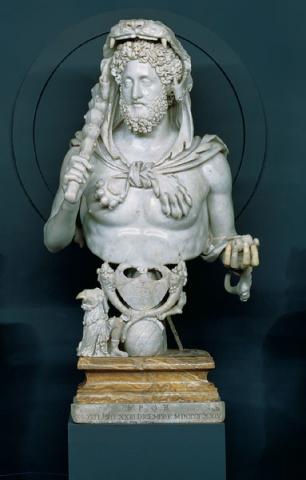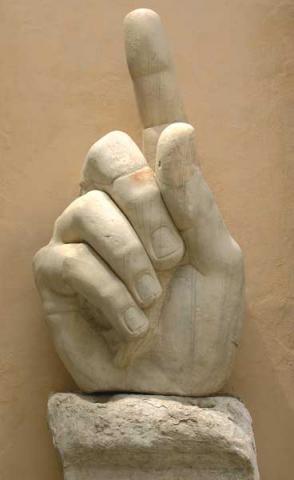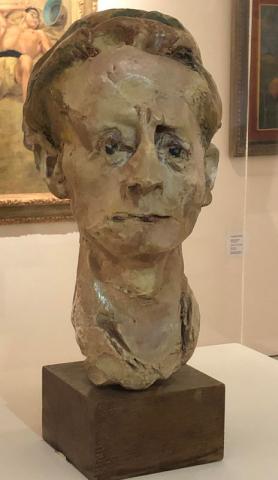The Artwork of the Month - September 2023
Leoncillo Leonardi
Selfportrait, 1942,
glazed pottery, 32x18x20 cm;
Courtesy from Carla Marchini
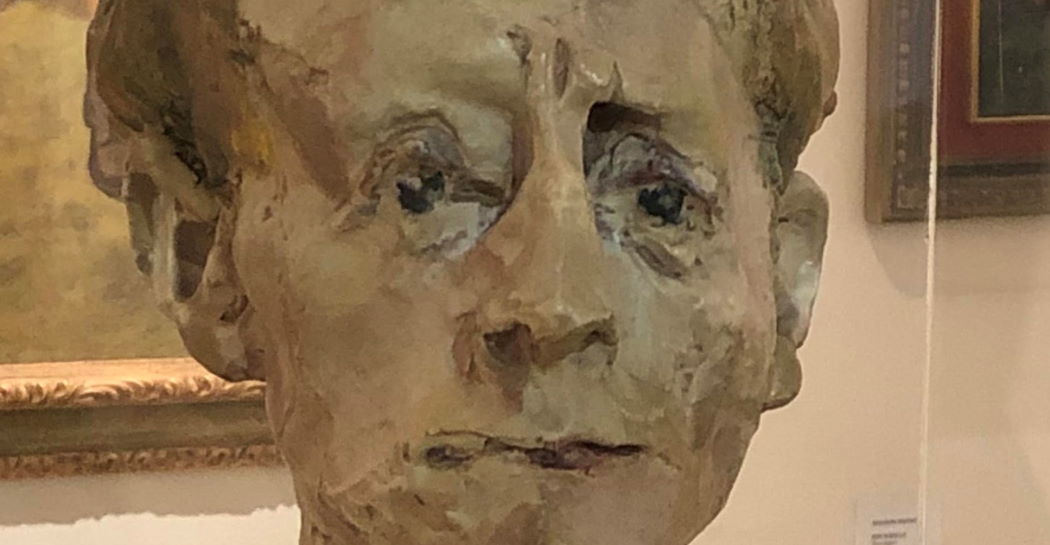
This exceptional work by Leoncillo Leonardi achieves at the same time to render a remarkable physical realisation with the artist portraying himself at the age of 27, as well as the psychological nuances that characterise his restless personality. The sculptural material is modelled with a quick and anti-classical touch, capable of capturing the instability of the face's expression, captured in the moment when the furrowed brow, the eyes fixed towards a distant point and the tight mouth, reveal some deep concern. Anxiety that certainly reflects not only a personal datum, but also the dramatic epochal conjuncture experienced in Leoncillo's youthful years. The colour, enhanced by the glazing, and the deliberately unfinished modelling create a remarkable painterly effect on the work.
Leoncillo Leonardi (Spoleto, 18 November 1915 - Rome, 3 September 1968) is one of the greatest representatives of 20th century Italian sculpture, capable of elevating the craft technique of ceramics to artistic status, first with the depiction of figurative subjects and later, in continuity with this first phase, with the realisation of informal works in which the material is also worked with great expressive force.
The third and last child of regional poet and drawing teacher Fernando Leonardi and Giuseppina Magni, he was orphaned at the age of three. With a rebel nature, he flunked out of the Technical Institute at the age of fifteen and decided to isolate himself in the attic, where he began sculpting clay blocks that his brother Lionello brought him to comfort his loneliness. Passionate about art, he subsequently undertook studies at the Art Institute in Perugia from 1931 to 1935 and then at the Academy of Fine Arts in Rome. In the Capital he frequented Libero de Libero (his brother Lionello's university colleague), Corrado Cagli, Mirko, Afro, Renato Guttuso and other personalities who characterised the artistic environment of the Capital at the time. Thus, at a very young age, he gained his first artistic experiences within the so-called Roman School, following Scipione and Mario Mafai with great interest. In 1939, he moved to Umbertide, in Umbria, where he married Maria Zampa, his former school friend, by whom he would have two children, Daniela and Leonetto, and came into contact with the local Ceramiche Rometti factory, where he deepened his technical knowledge; in the same kilns, he produced large sculptures: the Arpia, the Sirena and the Ermafrodito, collectively known as The Mostri. He organised the first communist cell in Umbertide among the Rometti workers. Thanks to his talent, he was noticed by the great architect and designer Gio Ponti, who in 1940 invited him to exhibit in a room at the 7th Milan Triennale as part of the Ceramics Exhibition and won the Gold Medal for Applied Arts. In 1942 he returned to Rome where he taught plastic and decoration at the State Institute of Art until 1952; his colleagues included Ettore Colla, Afro and Pericle Fazzini. The following year, in a group exhibition with other young artists such as Toti Scialoja, Domenico Purificato, Giulio Turcato and Emilio Vedova, he exhibited the Mostri series at the La Cometa gallery in Rome, which was a great success. The events of the war prompted him, as a convinced anti-fascist, to seek a more direct political and social commitment; he therefore joined the partisan forces of the 'Francesco Innamorati' Garibaldi Brigade in Foligno. His commitment was also reflected in the works he produced around the time of the last war: in 1944 in Rome, liberated by the Allied troops, he created the Madre romana uccisa dai tedeschi, that won the first prize ex aequo for sculpture at the exhibition L'arte contro la barbarie, an exhibition created on the initiative of the newspaper l'Unità, to denounce the atrocities of Fascism and Nazism. Meanwhile, in Rome, Leoncillo joined the clandestine military organisation of the Italian Communist Party. In the post-war period, he joined artistic groupings in search of an evolution of his language: in 1946 in Venezia, with 10 other artists, he signed the manifesto of the Nuova Secessione Artistica Italiana; the following year, as part of the VIII Triennale in Milano, he took part in the first exhibition of the group, which in the meantime had changed its name to Fronte nuovo delle arti.
He was still in Venezia, as part of a group, at the XXIV International Art Exhibition in 1948, returning there to exhibit in 1950, 1952 and 1954, where a room was dedicated to him together with Lucio Fontana; among other works, he exhibited Bombardamento notturno. He was also present at the 1960 Biennale and at the 1968 Biennale, again with a personal room.
In 1948, together with young communist artists such as Marino Mazzacurati, Renato Guttuso and Emilio Greco, he set up his own studio in Villa Massimo in Roma, in the centre of which is an oven, where he worked until 1956. In 1949, presented by Roberto Longhi, he held his first solo exhibition at the Galleria Fiore in Firenze. In the meantime, he received a number of public commissions, including in 1955 the one for the creation of the Monumento ai caduti di tutte le guerre (Monument to the fallen soldiers of all wars), for the municipality of Albissola Marina, positioned on the town's seafront. In 1956, following a profound ideological crisis, opposed to Togliatti's pro-Soviet line, Leoncillo resigned from the Communist Party and began a severe revision of his work of the last decade to turn to informal experiences based on the creation of sculptures with ceramic castings in primary colours (white, black, red) crossed by clean cuts or furrows. In 1957, he exhibited at Plinio De Martiis' Galleria La Tartaruga in Roma and on this occasion, in the self-presentation in the catalogue, he expressed the profound reasons for his adhesion to Informal and Neo-realism. He also exhibited a series of large-scale non-figurative works at the Galleria Romana L'Attico in Rome.
Leoncillo died early at only 53 years of age, struck down by a heart attack. In Spoleto, his hometown to which he always remained very attached, an important retrospective is dedicated to him one year after his death.
Back to the section > The Artwork of the Month of The Museo della Scuola Romana


























